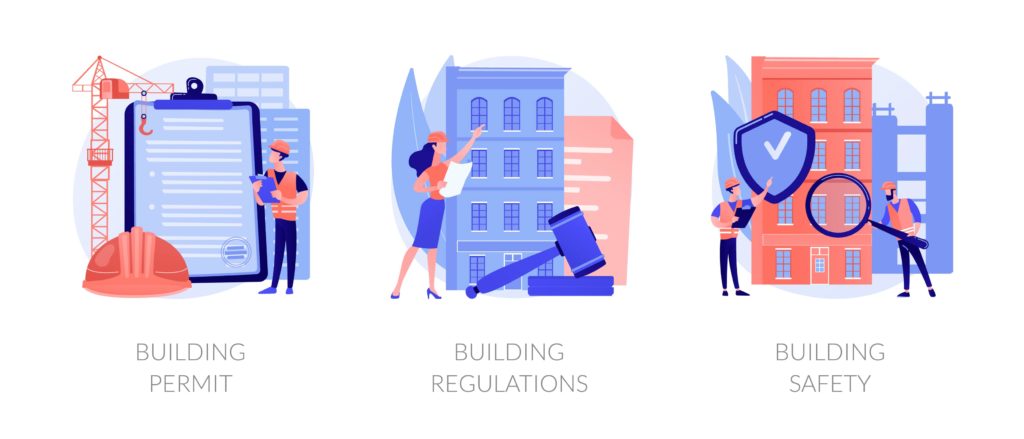Sector - Health & Safety
Building Safety Bill Announced

The Building Safety Bill, which was published on Monday 5 July, will create lasting generational change and set out a clear pathway for the future on how residential buildings should be constructed and maintained.
Housing Secretary Robert Jenrick outlined the next key steps in an extensive overhaul to building safety legislation, giving residents more power to hold builders and developers to account.
The Building Safety Regulator will oversee the new regime and will be responsible for ensuring that building safety risks in both new and existing high-rise residential buildings of 18m and above are effectively managed and resolved, taking cost into account.
Mr Jenrick said: “This Bill will ensure high standards of safety for people’s homes, and in particular for high-rise buildings, with a new regulator providing essential oversight at every stage of a building’s lifecycle, from design, construction and completion to occupation.
“The new building safety regime will be a proportionate one, ensuring those buildings requiring remediation are brought to an acceptable standard of safety swiftly, and reassuring the vast majority of residents and leaseholders in those buildings that their homes are safe.”
This will include implementing specific gateway points at the design, construction and completion phases to ensure that safety is considered at each and every stage of a building’s construction, and safety risks are considered at the earliest stage of the planning process.
These changes will simplify the existing system to ensure high standards are continuously met, with a ‘golden thread’ of information created, stored and updated throughout the building’s lifecycle, establishing clear obligations on owners and enabling swift action to be taken by the regulator, wherever necessary.
The reforms will also tackle bad practice head on, building on Dame Judith Hackitt’s review of Building Regulations and Fire Safety which highlighted the need for significant cultural and regulatory changes.
Under the proposals, the UK Government is more than doubling the amount of time, from six to 15 years, that residents can seek compensation for substandard construction work. The changes will apply retrospectively. This means that residents of a building completed in 2010 would be able to bring proceedings against the developer until 2025.
New measures in the Building Safety Bill will:
- Ensure there are clearly identified people responsible for safety during the design, build and occupation of a high-rise residential building.
- Establish a Building Safety Regulator to hold to account those who break the rules and are not properly managing building safety risks, including taking enforcement action where needed.
- Give residents in these buildings more routes to raise concerns about safety, and mechanisms to ensure their concerns will be heard and taken seriously.
- Extend rights to compensation for substandard workmanship and unacceptable defects.
- Drive the culture change needed across the industry to enable the design and construction of high-quality, safe homes in the years to come.
The Bill will include powers to strengthen the regulatory framework for construction products, underpinned by a market surveillance and enforcement regime led nationally by the Office for Product Safety and Standards (OPSS).
Mary-Anne Bowring, Group Managing Director at Ringley, commented: “The introduction of the building safety regulator shows that the Government is moving in the right direction in regard to building safety in the UK.
“Originally suggested by Dame Judith Hackitt in her review, the building safety regulator will take a front seat in ensuring the safety levels of high-rise residential buildings are up to standard.
“Developers who are looking to join the New Homes Ombudsman scheme should be made to reach the key requirements of building safety before being allowed to join the scheme. We expect this to become a differentiator that great developers will want to embrace.
“For far too long now thousands of leaseholders have been trapped in unsafe apartment buildings across the UK, and we’re hopeful that the Government is finally starting on the correct path to tackling Britain’s chronic problem with build quality.”
Jonathan Moulam, President of the Association for Project Safety, the 4000-strong UK-wide membership body for construction health and safety risk management, said: “The Association for Project Safety believes safety comes first – before the first drawing is produced or brick is laid. This long-awaited publication of the Building Safety Bill offers the opportunity to reset building safety in England by designing safety in and appointing a safety expert to every team when projects are being developed.
“APS members believe everyone should have the right and expectation to work and live in buildings that are safe. Firms that have failed in their duty to guard the safety of residents and workers should play their part in putting things right. But safety cannot be an afterthought. And it is a collective effort.
“Everyone in construction – designers, construction workers, clients, government and regulators, at every stage of the life of a building – must work together using all our skills and experience to make construction safer for everyone.”
If you would like to read more stories like this, then please click here
Related Articles
More Health & Safety News
- Government finalises RAAC removal programme
18 Nov 25
Definitive timeline for the complete removal of Reinforced Autoclaved Aerated Concrete (RAAC) from all affected
- Construction mental health consultation
29 Oct 25
The Construction Leadership Council (CLC) has launched a mental health in construction consultation.
- “Serious gaps” found in protecting workers from excessive noise
3 Oct 25
Three-quarters of noisy workplaces lacked essential knowledge on maintaining hearing protection equipment, inspections have found.






